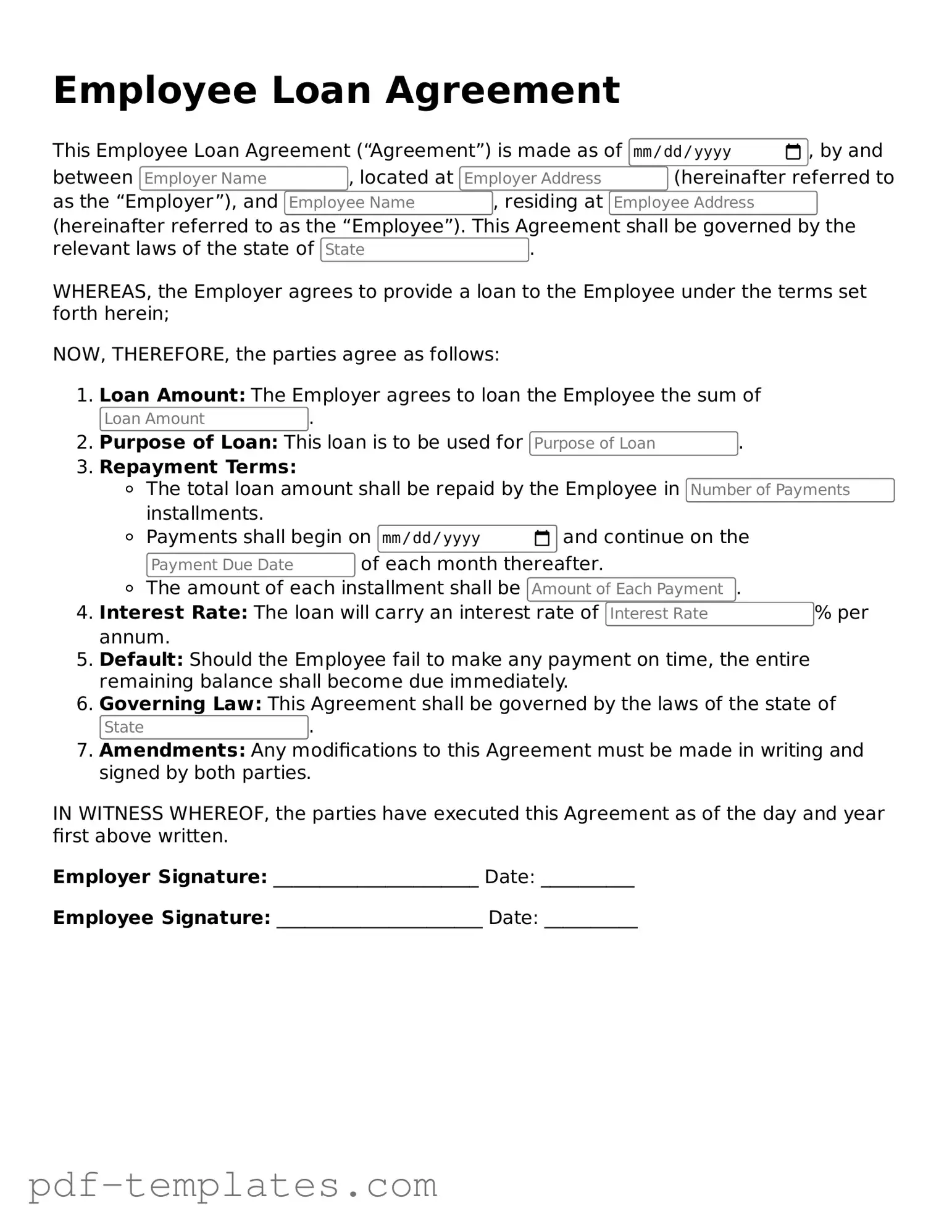An Employee Loan Agreement is quite similar to a Personal Loan Agreement. Both documents outline the terms under which money is lent to an individual, specifying the loan amount, interest rates, repayment schedule, and any consequences for defaulting. In both cases, the lender seeks to protect their investment while ensuring that the borrower understands their obligations. The key difference lies in the context; a Personal Loan Agreement is generally used between individuals or financial institutions, while an Employee Loan Agreement is specific to the employer-employee relationship.
A Credit Agreement also shares similarities with an Employee Loan Agreement. Like the Employee Loan Agreement, a Credit Agreement details the terms of borrowing, including the amount, interest rates, and repayment terms. However, Credit Agreements are often broader and can encompass various forms of credit, such as lines of credit or credit cards, whereas an Employee Loan Agreement is specifically tailored for loans provided by an employer to an employee.
The Promissory Note is another document that closely resembles an Employee Loan Agreement. Both documents serve as a written promise to repay a loan. A Promissory Note typically includes the loan amount, interest rate, and repayment terms. However, it is usually less detailed than an Employee Loan Agreement, which may include additional clauses that address employment status and specific conditions tied to the loan.
An Installment Loan Agreement is also akin to an Employee Loan Agreement. Both types of agreements involve borrowing a set amount of money that is to be repaid in regular installments over a specified period. The main distinction is that Installment Loan Agreements are often used for larger purchases, such as cars or homes, while Employee Loan Agreements are generally smaller and more focused on assisting employees with personal financial needs.
A Lease Agreement can be compared to an Employee Loan Agreement in that both documents outline the terms of a financial arrangement. While a Lease Agreement is specifically for renting property, it includes terms like payment amounts, duration, and responsibilities, similar to how an Employee Loan Agreement specifies the loan terms. Both agreements aim to clarify expectations between parties to prevent misunderstandings.
An Employment Contract may also have similarities with an Employee Loan Agreement. Both documents establish a formal relationship between an employer and an employee, detailing rights and responsibilities. While an Employment Contract focuses on job duties and compensation, it may include clauses about loans or advances, particularly if financial support is part of the employment package.
A Mortgage Agreement shares some characteristics with an Employee Loan Agreement as well. Both involve borrowing money with a repayment plan. However, a Mortgage Agreement specifically pertains to real estate and includes collateral in the form of the property itself. In contrast, an Employee Loan Agreement typically does not require collateral, focusing instead on the employee's promise to repay.
Understanding the various types of loan agreements is essential for both borrowers and lenders to ensure clarity and compliance with financial obligations. For those interested in creating a legally binding document tailored to their needs, resources like formcalifornia.com/ provide valuable templates and guidance to help navigate the complexities of loan agreements and protect the interests of all parties involved.
A Business Loan Agreement can be compared to an Employee Loan Agreement in terms of structure and purpose. Both agreements detail the terms of a loan, including the amount, interest rate, and repayment schedule. However, a Business Loan Agreement is aimed at businesses seeking funding for operations or growth, while an Employee Loan Agreement is intended to assist individual employees with personal financial needs.
Lastly, a Loan Modification Agreement is somewhat similar to an Employee Loan Agreement. Both documents deal with the terms of a loan, but a Loan Modification Agreement specifically alters the existing terms of a loan, such as the interest rate or repayment schedule. In contrast, an Employee Loan Agreement is typically created at the outset of a loan and does not involve changes to previously established terms.
